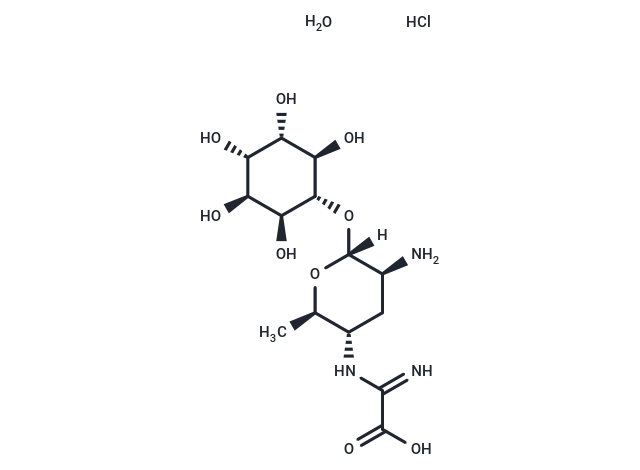Shopping Cart
- Remove All
 Your shopping cart is currently empty
Your shopping cart is currently empty

Kasugamycin hydrochloride hydrate (Ksg (hydrochloride hydrate))(Ksg) specifically inhibits translation initiation of canonical but not of leaderless messenger RNAs. Ksg inhibition is thought to occur by direct competition with initiator transfer RNA

| Pack Size | Price | Availability | Quantity |
|---|---|---|---|
| 200 mg | $30 | In Stock |
| Description | Kasugamycin hydrochloride hydrate (Ksg (hydrochloride hydrate))(Ksg) specifically inhibits translation initiation of canonical but not of leaderless messenger RNAs. Ksg inhibition is thought to occur by direct competition with initiator transfer RNA |
| Alias | Ksg (hydrochloride hydrate) |
| Molecular Weight | 433.84 |
| Formula | C14H28ClN3O10 |
| Cas No. | 200132-83-8 |
| Smiles | O.Cl.[H][C@]1(O[C@@H]2[C@@H](O)[C@@H](O)[C@H](O)[C@H](O)[C@H]2O)O[C@H](C)[C@H](C[C@@H]1N)NC(=N)C(O)=O |
| Relative Density. | no data available |
| Storage | Powder: -20°C for 3 years | In solvent: -80°C for 1 year | Shipping with blue ice. | |||||||||||||||||||||||||||||||||||
| Solubility Information | H2O: 100 mg/mL (230.5 mM) DMSO: < 1 mg/mL (insoluble), Sonication and heating are recommended. | |||||||||||||||||||||||||||||||||||
Solution Preparation Table | ||||||||||||||||||||||||||||||||||||
H2O
| ||||||||||||||||||||||||||||||||||||

Copyright © 2015-2024 TargetMol Chemicals Inc. All Rights Reserved.